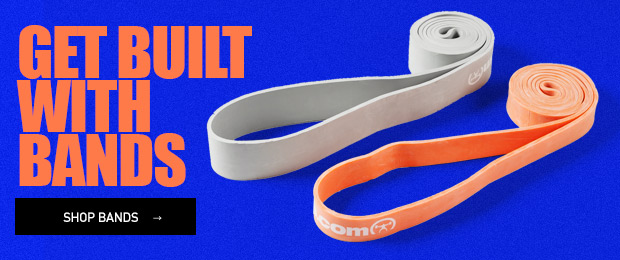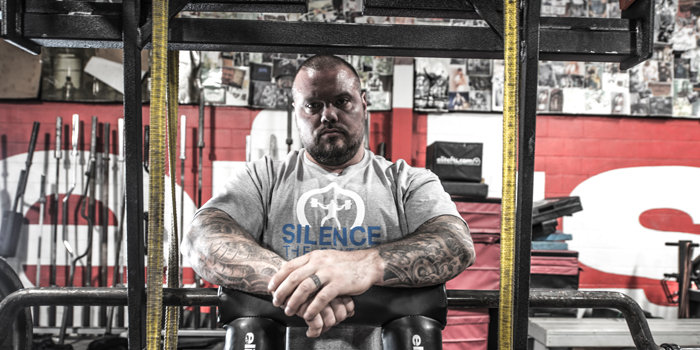
If you haven’t already checked out the first collaboration with some friends of mine in the field (Steffen Smith, Nick Novacich, Steve Konopka, Steve Welch, Tyler Jennings, Jeff Miller, and Chris Thacker), you can do that by clicking here.
Reading that will help you understand what each of the coaches’ and lifters’ backgrounds are and where each opinion is coming from.
RECENT: Refueling and Recovery for BAMF Wrestlers
After that if you haven’t checked out Part 1, “Improve Your 1RM Squat with These Variations,” and Part 2, “Improve Your 1RM Bench Press,” of this three-part series, go do it.
For this article, I asked everyone:
Besides actually performing the deadlift, in your opinion and from your experience, what is the next best movement to improve the lifter's 1RM? It can be anything from a secondary movement, an accessory, a certain machine, etc., with reasoning or example of why.
It is great to get advice from across the country and hear what works for whom. I hope that after reading this, the reader will pick up something to help them perform a better deadlift.
This should help take away some trial and error on the reader as well. They gave no wrong or right answers. This is something that has helped them.
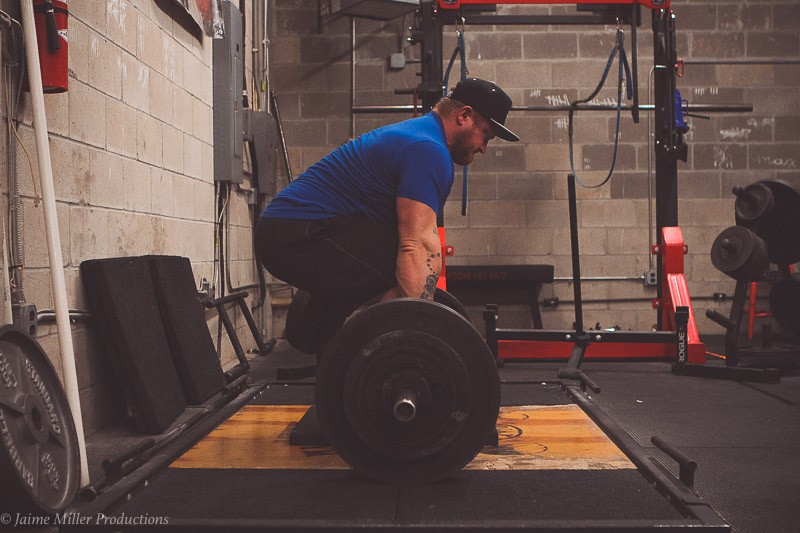
Steffen Smith
Raw lifter at Max Barbell Gym in Springfield, Illinois
Each of the competition lifts presents its own individual required skills, disciplines, and attributes. The deadlift is unique from the squat and bench press, as it is absent of an eccentric loading phase. Because of this dynamic, it’s crucial that speed off the floor is an important component to lay emphasis on during training. Clearly, the rest of the lift should not be neglected, but what good is a strong lockout if you can’t begin the lift effectively or efficiently enough to reach lockout?
Training the deadlift using a deficit is a great way to improve speed off the floor. Load the lower posterior more and create just enough variation in leverage that when returning the pull from the floor, improvements should be noticed in speeding off the floor.
When using a deficit, more isn’t always better necessarily. Approximately two inches should be enough to create the desired variation that allows for an applicable amount to carry over into the completion lift. I suppose more or less could be added when considering an individual's personal limb lengths; someone with longer arms could possibly use a bit more deficit, and someone with shorter arms may use a bit less if two inches alters their beginning position too much.
I like the deficit as a variation or assistance/secondary work because you’re utilizing the entire range of motion and then some, so no portion of the movement is neglected or overlooked. With this in mind, you can still apply other strategies to improve the lift while still using this exercise, so you can effectively use the deficit deadlift to improve the entire lift:
- Apply compensatory acceleration while using a deficit. You’ll get the most out of every repetition and set while still yielding the benefits of the variation for the starting position.
- Use bands for accommodating resistance. You’ll improve your speed not just off the floor but also throughout the lift well into lockout if that is the trouble area for you.
If you’ve never performed this lift, you can try it pretty easily. You can create a deficit by standing on a 100-pound plate or a bumper plate if your gym has mats you could stand on that, or even build your own platform from wood to stand on to lift off of a deficit.
ANOTHER VIEW: Powerlifting for the Bodybuilder — Are Deadlifts Overrated?
You’ll want to focus on lowering your hips, a little more than you would for the standard deadlift while setting up your starting position. Typically, people’s hips will shoot upward; don’t let that happen. Instead, begin with a weight that you can control first with proper technique.
I tell people to “sit back” as they push the floor away to avoid the hips rising from the start. Remember, our hips should ideally be moving one direction for the deadlift: FORWARD, not upward. It may be difficult at first, and I’ve noticed a lot of people have learned how to use their hamstrings to initiate the deadlift with this exercise.
I hope this is helpful. I have enjoyed writing and being asked to participate in this series of articles. I hope this series has helped the reader and their total.
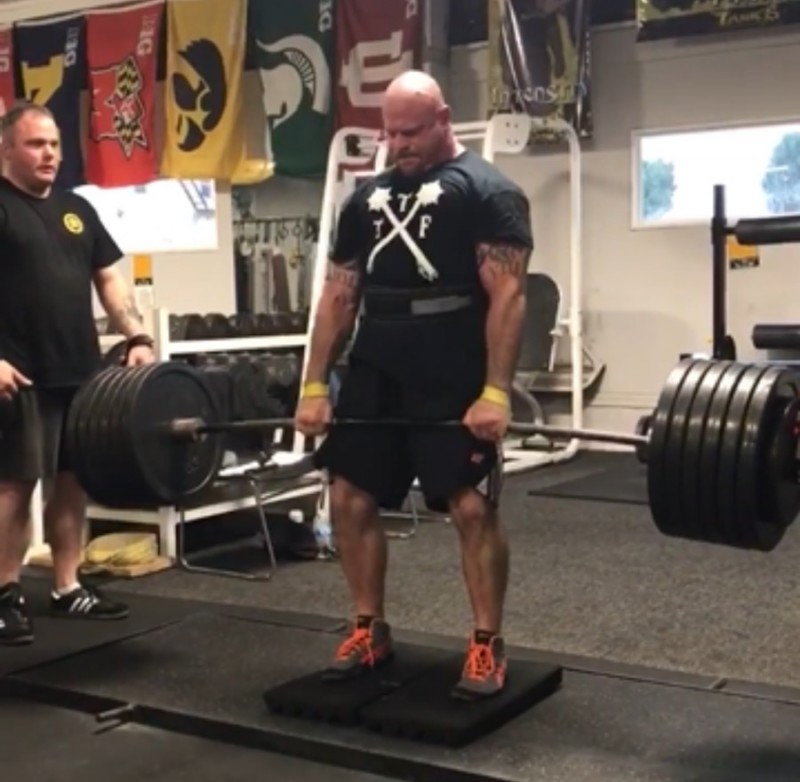
Nick Novacich
Multi-ply lifter at Tanks Training Facility in Granite City, Illinois
It has been said that deadlift is the truest measure of strength, and I couldn’t agree more. I’ve deadlifted raw, in single-ply, and in multi-ply, and I have found that for me, gear plays a very small part when pulling for max numbers. Having said that, it has always been my focus to bring up my raw strength as much as possible when trying to reach a new personal record on the deadlift, regardless of the level of gear I am attempting it in.
Despite the fact that I always pull sumo in competition, when attempting to increase my deadlift, I focus on trying to increase both my sumo and conventional pull. I do this to ensure I do not neglect any facet of the pull. I also do this to teach my body to use all muscles in concert with one another and make sure that I do not neglect any portion of the needed range of motion.
Aside from training both styles of the deadlift, I also use a few accessories that I consider staples in my program for increasing my strength. I have found that the best method for me is to increase my deadlift is by training my back with heavy rows using barbells and dumbbells. I work these in relatively low rep ranges (six to eight reps) compared to some of my other accessory work.
I try to row the maximum amount of weight I can while maintaining the tightest and safest form (I detached my biceps tendon once acting like a jackhole, so I had to learn from my mistake). I prefer Pendley Rows and Dead-Stop Dumbbell Rows. I feel that by starting each rep from a dead-stop forces me to maintain my form better and keeps me from bouncing the weight all over the place. This also keeps me from flopping my body around and using momentum to row the weight.
Please understand that only by recognizing and addressing my own weaknesses when deadlifting have I been able to maximize my deadlift numbers. By focusing on rows, I have corrected my main weakness when deadlifting and no longer round my back. I implore all lifters to throw their egos aside and address their weaknesses.
All lifters need to take time and record each of their lifts (and not for social media). A lifter has to review his or her successful lifts and failed lifts equally to see what went right and what went wrong. Videos do not lie and will give you an honest depiction of your lifts so you don’t have to rely on your supportive buddies, wife, husband, etc., to give you feedback because it may just be what you want to hear, not what you need to hear.
RELATED: When Honesty is the Best Policy
When reviewing your videos, you need to be your biggest critic. If you find that you have a hard time staying tight when you start the deadlift, focus more on your setup and how you brace for the lift. If you round your head and shoulders over or feel the bar drifting away from your body, strengthen your lats and upper back. If you feel your butt shoot up when you start to pull, learn to pull the slack out of the bar and learn to drive your legs first (picture doing a leg press with your arms acting merely as hooks to hold the weight). If you cannot drive your hips through, focus on strengthening your glutes, and lastly, if your grip sucks, work your grip more and ditch the wrist straps.
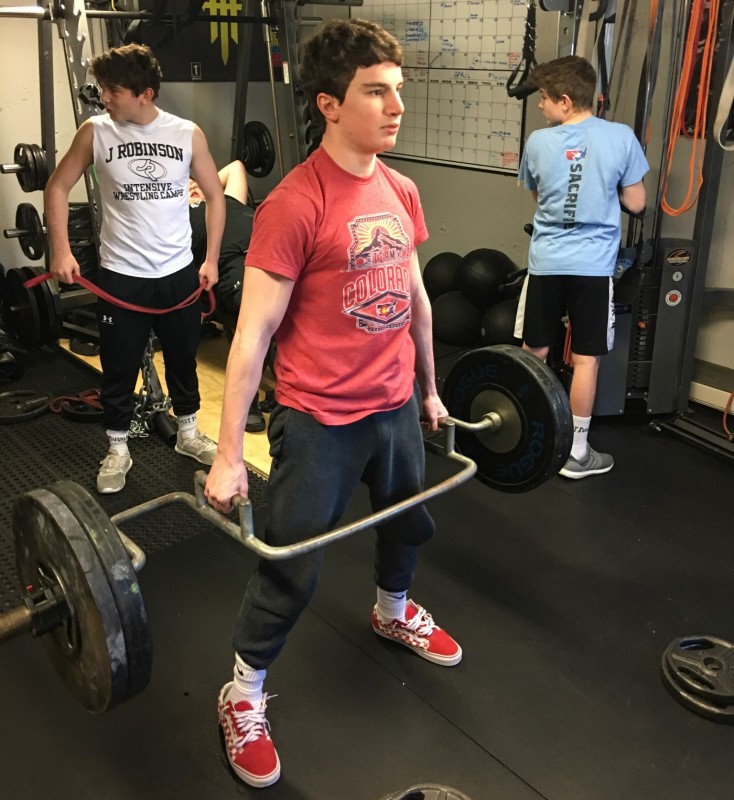
Steve Konopka
Strength and conditioning coach at Strength N Honor Training in Simsbury, Connecticut
For increasing the 1RM deadlift, there are numerous options as always for the Big Three. One exercise I like the best and see a great carry over to the field for athletes trying to increase their deadlift is the Romanian Deadlift (RDL). I feel the RDL really hits that posterior chain (hammys, glutes, and lower back). The RDL also hits the posterior chain in a very similar manner to the deadlift, closely mimicking the top half of the pull.
Taking the RDL off the rack and slowing controlling the eccentric phase really increases the athletes’ strength and bolsters that posterior chain with some power to attack heavier loads in the deadlift.
I like using three-second negatives for these in reps of three to five for three sets while using the heaviest weight possible still allows good form for that three-second eccentric phase.
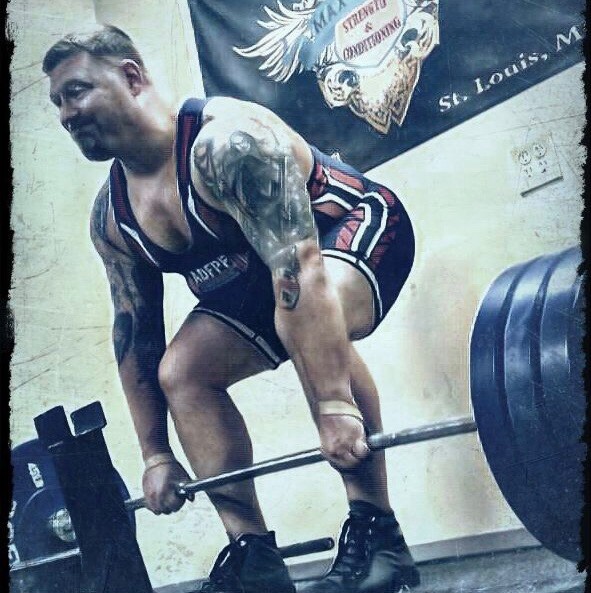
Steve Welch
Single-ply and raw lifter, gym owner of Max Effort Strength and Conditioning, and owner of Skull Smash Ammonia in St. Louis, Missouri
With regards to the Big Three lifts, the deadlift is probably the simplest to do, and gain working proficiency, but it is not at all any easier to get crazy strong at. I will start by saying that in my opinion and experience, deadlifting makes you better at deadlifting. I know we are in an age of everyone wanting to reinvent the wheel to keep relevant in the social media world, but NO ONE has ever been a notable deadlifter because they did a minimal amount of deadlifting while increasing their workload in pelvic bridges, monster walks, goblet squats, etc.
In a purely observational way during in my time in the sport, I have noticed two things about really good deadlifters: they are a little off in the head and they LOVE to pull and to pull often.
Having said that, there are, of course, variations and assistance work that can certainly make the deadlift more successful. As is always the case, what I’m about to write about are just some of them and not at all the only worthy exercises. Everyone has different needs and will respond to exercises differently based on those needs.
First off, unless you have a physical limitation, which prohibits you, I believe most people should do an ample amount of work pulling their non-primary style. So, if you pull sumo, also train conventional, and vice versa. And EVERYONE should do some RDL training. I personally find it more important for sumo folks to pull conventional than for conventional people to need as much sumo, but if you can, do a bit of cross-training with the other styles. Each one builds you in different ways, all of which will lend to you being stronger.
READ MORE: Conventional or Sumo? Or Both?
I’m going to state the obvious and tell you that it’s vital to make sure your abs, posterior chain (hamstrings, glutes, low back), grip, and mid- and upper-back have to be strong. There are literally endless options for assistance exercises that work these areas, and I suggest to people to pick a few that are working for you or that you’re excited about, do them for a few weeks, and then switch them out. Here is just a small sampling of some of my favorites:
- Heavy Bent-Over Rows (barbell, dumbbell, cables, etc)
- Shrugs (dumbbell, barbell, regular grip, and snatch grip… but make sure your shoulders, wrists, and biceps handle these well)
- Glute Ham Raise (GHR)
- Romanian Dead Lifts. Sometimes I’ll do these with a single leg… it’s much more difficult.
- Good Mornings
- Seated Safety Bar Good Mornings. It hits the mid back and abs as well.
- Anterior Good Mornings with an Atlas Stone. Hug the stone to your chest and do your good mornings that way. It fries my mid-back and abs as well as my posterior chain.
- Standing Cable Crunches. These balance out the musculature used in deadlifting.
- Hanging Knee Raises
- Leg Curls
- Lunges
- Bicep and Forearm Work
Like I mentioned, these are just some of the exercises I like and know that work when programmed properly. Feel free to explore and utilize any of the other effective movements out there.
When it comes to a variation of the deadlift itself, I will say that my favorite is the one that I’m personally doing now, and it’s my favorite because it is working for me now and it has in the past. I really like doing Paused Deadlifts with band tension added. I aim to pause somewhere within an inch above or below the knee because that is the tricky spot for most conventional pullers. I start from the floor, pause for a second or two at the knees, and then I try to explode up to full lockout.
The hyper-eccentric effects of band tension can make a relatively light load become instantly challenging, and it certainly challenges my need to be in a good position, tightly braced, and mentally dialed in. Band tension makes the exercise more difficult, and so does pausing and holding the weight statically, in what is probably the most disadvantaged position in the entire lift. If you are out of position or not braced tightly, you will know it instantly. This variation holds the lifter very accountable. It is important to be strong and resilient in this position and phase of the lift.
I am a raw lifter, so the band tension I use depends a lot on how much bar weight I’m using, but I usually keep it between 6 to 100 pounds of band tension at the top of the lift. I usually will do beltless sets of four to six reps with a percentage between 50 to 60 percent, and I will do belted sets of three to five reps with 60 to 70 percent (plus the band tension, of course).
After my paused sets with band tension, I usually do a set or two, with the top weight I was doing, but I don’t pause the weight and see how much bar speed I can generate. I then take the bands off, and either stay at the same weight or bump it up just a bit and pull some singles, trying to be as fast and as tight and aggressive as I can be. I usually get to about five to eight singles before I’m struggling to keep good form and execution. If I’m not worn out after that, I will do a set or two of eight to ten reps at a bit of a lighter weight.
So there is my current favorite deadlift variation, a few assistance exercises I like, and a few of my thoughts on training the deadlift in general. This is just what I like and what has worked for my clients and me for many years. I do many other variations throughout my training, and you should use as many good ones that you find are working for you, too.
WATCH: The Staggered Leg Deadlift with Dr. Eric Serrano
I hope this has been of some small help to some of you, and I wish you the best success in training and competition.
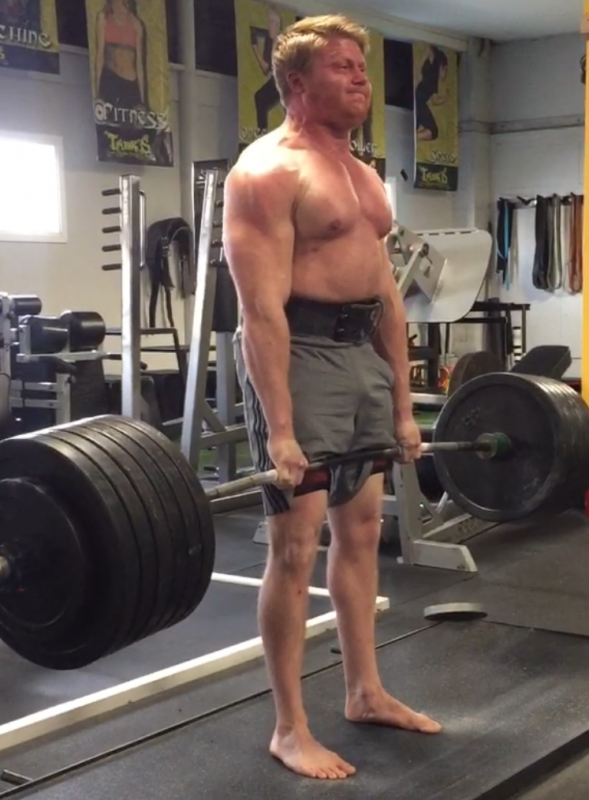
Tyler Jennings
Raw powerlifter and coach at Tanks Training Facility in Granite City, Illinois
In my opinion, the best accessory for building a 1RM deadlift is straight leg deadlifts (SLDL). The reason I like the SLDL is that it takes the quad drive out of the movement and is very versatile. It can be set up in different stances and from deficits or blocks. Basically, how you perform the movement is through a slight bend in the knee, hinging at hips, grabbing the bar, tightening your back, and pulling. You should feel the movement in the whole posterior chain.
Another thing I like about the SLDL is it’s very similar to the regular deadlift and is a great tool for teaching new lifters how to use their hips. This can be set up in a conventional or sumo stance. If you’re not feeling your hamstrings in the movement, try starting the bar a little farther away from your shins. This movement is great for building muscle and building strength in the whole posterior chain. That is why the SLDL, in my opinion, is one of the best exercises to increase your 1RM deadlift.
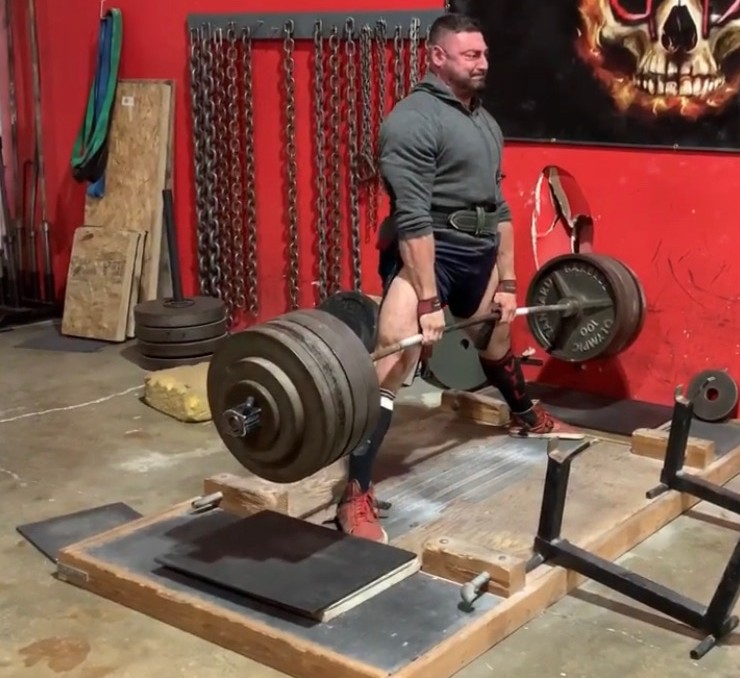
Jeff Miller
Multi-ply lifter at Diablo Barbell in Concord, California
I will start by saying what works for me may not work for you. We have different strengths and weaknesses, experience levels, body types, etc. With that being said, my favorite/most effective supplementary movement for the deadlift has been the Glute-Ham Raise (GHR) versus bands.
First, let’s quickly touch on a few benefits of the GHR:
- Hits the entire posterior chain: glutes, lower back, calves, and hamstrings
- Puts very low stress on the lower back
- Deloads the spine
- Trains both knee flexion and hip extension
- Adds strength to all lower body exercises
Why: The GHR hits the hamstrings, glutes, calves, and spinal erectors. It’s a move that you can use for high volume due to the low amount of stress it puts on the lower back. Because of this, it’s also great for people who have issues with spinal loading exercises. Along with these benefits, it’s the only move where you’re training hip extension and knee flexion at the same time. The hamstrings bend the knee and extend the hips, while the glutes extend the hips. This also makes it a great move for athletes.
While on the topic of glute extension, if you’re having lockout issues on your deadlift, this is a phenomenal move. The lockout was my weakness for a long time, and I needed something different to address it. At this point in time, I had been doing a lot of GHRs. A training partner was watching me one day and suggested I move the footplate forward one notch. This makes for a longer lever and a less advantageous position.
LISTEN: Table Talk Podcast — "Figuring Shit Out" is Lost
The result? I couldn’t do one! What I failed to mention is that my raw deadlift was 675 pounds at the time. I was deadlifting 675, and couldn’t even do one GHR. I was actually a little embarrassed. I started doing them every lower body workout.
Six months later, I deadlifted 725 pounds. Honestly, I couldn’t believe it at the time. What do we hear all the time? You’re only as strong as your weakest link. You must expose that weak link and attack it!
Parameters: I typically use this as an accessory move on lower body days, but have had people throw them in four days per week, if they are a big weakness. I differ the set/rep schemes, but for the most part, use four to six sets of eight to twelve.
If you cannot do a strict GHR to start, use bands or have a person to assist you in the move. Progress to using bodyweight, and then when you’re able to do eight to twelve strict reps, move on to using bands for resistance. There are tons of ways you can do them; see Dave Tate’s article.
Tips:
- Do not use the lower back for momentum
- Go down until your legs are straight
- Make sure you put the footplate at a challenging distance (not too close and not too far away)
- If you’re cramping in the calves, you may be too far away from the pad
- Keep the chin tucked and round forward
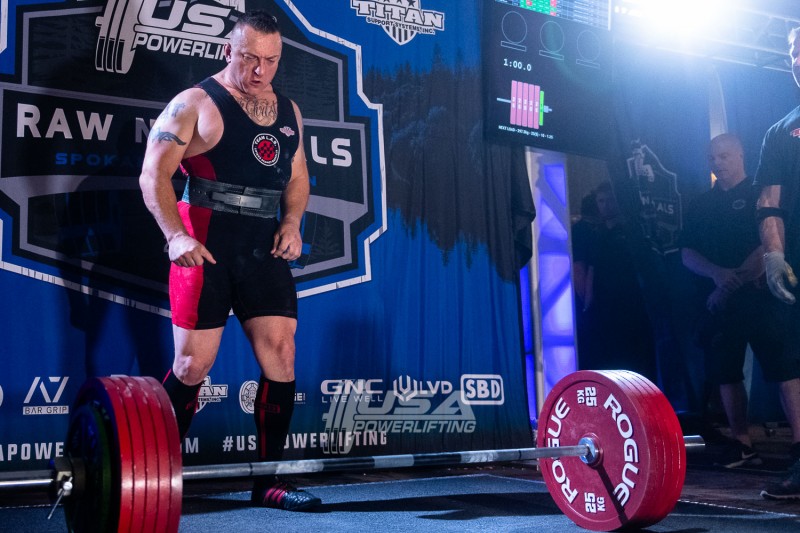
Chris Thacker
Raw lifter at The Lab in St. Louis, Missouri
Let me start off by saying I fall into the category of shitty deadlifter, otherwise known as, “I squat more than I can pull.” In my pursuit to be a better than average powerlifter, I have worked in every variation of pull work to find the right formula: Conventional, Sumo, Cleans, and RDLs cover the basic overview with infinite deviations, as you apply all the tricks in the book: rack pulls, deficits, bands in every direction (except for cleans, that shit is suicide; sorry Louie, but that ship don’t float), chains, pauses at all levels (both concentric and eccentric), touch-and-gos, and dead stops.
Then we get into all of the various accessories, which basically fall into two groups: countless row variations and hip hinge work or glute-ham/hypers/extension/core stabilization. Always searching for the remedy to the sticking point, which for me, is just below my knees.
The easy answer to the question, “What’s a good secondary movement to improve the 1RM deadlift?” Stop being a bitch and lift more weight.
It’s been proven time and time again that multiple trials over 90 percent of your 1RM bring adaptation. Personally, cluster singles multiple times per week is where it's at, but you’d better pack a lunch because it is hard-ass work and time-consuming. Regardless...
Step 1: Surround yourself with people stronger than you. Big fish-little pond comes to mind. More importantly, great training partners are hard to come by, and if you’re lucky enough to find one that is as dedicated as you should be AND is stronger than you, good things will happen as a result.
Step 2: Push yourself to train heavy and to train frequently. Adaptation being the endgame, which, by Webster’s explanation, is a modification of an organism or its parts that makes it more fit for existence under the conditions of its environment: a heritable physical or behavioral trait that serves a specific function and improves an organism's fitness or survival. Your environment is to lift heavy shit and to lift it frequently, so to make you more fit, for your existence. Keeping in mind, step two requires a lot of self-control and to respect your recovery. You can’t get by on shit sleep and a shit diet. Trust me, I’ve failed that route multiple times.
Don’t misunderstand; all of the above variations have their place to help an athlete get stronger through their deficiencies; however, the 1RM deadlift is just exactly that, a 1RM deadlift. It isn’t the sum of all the different ways you can break it down, load it, etc. It is the entire kinetic chain from start to finish.
In any deviation, the body will commit to an infinite number of compensations to express absolute strength. Even in the most trained athletes, holding (seemingly) pristine mechanics to emulate the specific range of motion from the full lift, you will find deviations in Central Nervous System activation, positions, and mechanics. Sure, there is carryover, but strength leaks don’t give a shit and will find a way out, regardless of how much your banded, chained, single-legged, tight rope, power clean is.
We appreciate all the great feedback and hope everyone enjoys and benefits from these tips that have helped us in our journeys to a better total. Please contact us with any more questions or comments.










